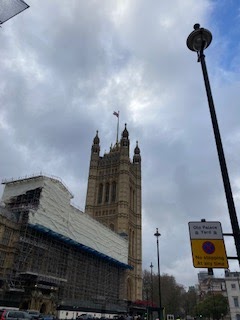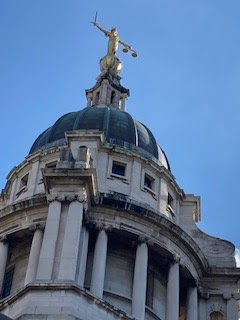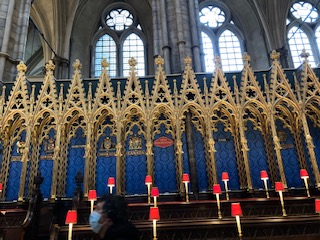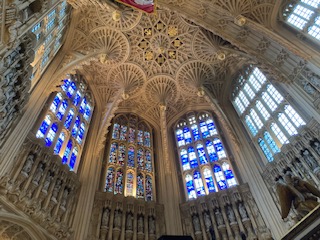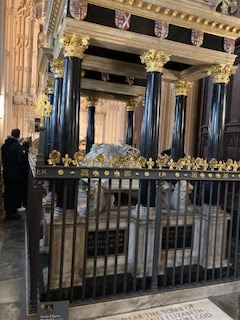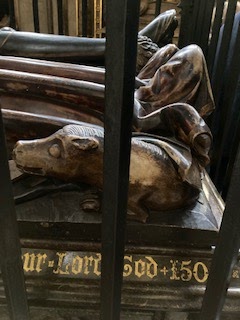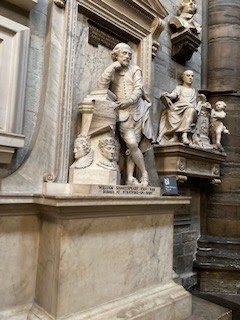Our second day trip was to Cambridge, the site of the prestigious Cambridge University. The town featured plenty of good pubs, a great market and a mall as well. The campus is very gorgeous and very old. I and my students are reading Virginia Woolf's A Room of One's Own, in which she begins by talking about feeling unwelcome at "Oxbridge," and it resonated when our guide Johnny pointed out that, though women founded numerous Cambridge colleges, they weren't actually allowed to graduate until 1948!
Our first and last stop was actually The Eagle, the Royal Air Force pub with an interesting history. Apparently, the open window you see here is never closed. The story goes that a young girl once lived in that room, and a candle fell, lighting her bedclothes and burning her alive. The window stays open to grant her soul freedom, and the superstition is that if it is shut, the place will burn down.Some other interesting history...the signature ale here is called Eagle DNA, in honor of the graduates at Cambridge who discovered the double helix.
We had a quick pint at the Eagle before leaving, so here is the inside.
This clock is outside the library that used to be a bank...it is fully mechanical except for the blue lights that indicate the actual time. The insect-like creature at the top is called the "Time Eater." He creeps along the top, sometimes slower and sometimes faster, correcting the time that is actually not the correct time. The creator wanted the clock to represent relative time...to reflect the way time can feel fast or slow depending on the situation.
This is the exterior of the King's College Chapel, which was by far the most spectacular sight at Cambridge.
The interior of the chapel. The symbols carved into the rock are representative of the Tudor family, as this would have been after the time of the War of the Roses. You see a lot of roses, and the portcullis symbol, which I think Parliament also uses. There are also repeated figures of the Tudor greyhound and the Welsh dragon. The dragons and doggies are all in different facing positions throughout. No mass production here.
More views of the windows here. These windows were protected from the WWII bombing by being taken down piece by piece and restored later, so they are the original. The bottom row depicts the story of Jesus from birth to resurrection. The top row features corresponding stories from the Old Testament...so for example, on top of the Gift of the Magi, we see the Queen of Sheba giving gifts to King Solomon.
On the choir side with our guide Johnny.
A boys' choir sings here every Christmas, and the program is broadcast all over the UK.















